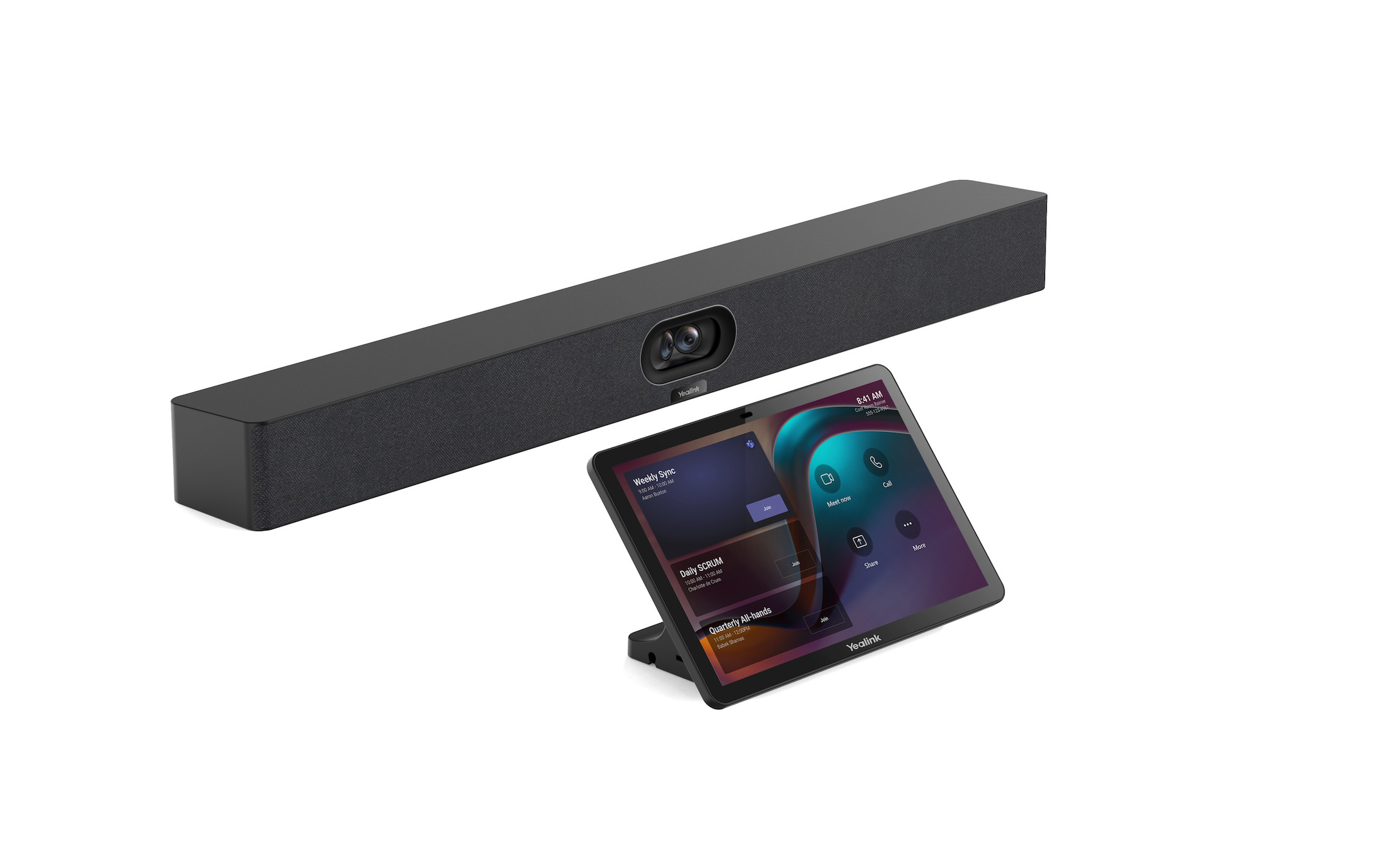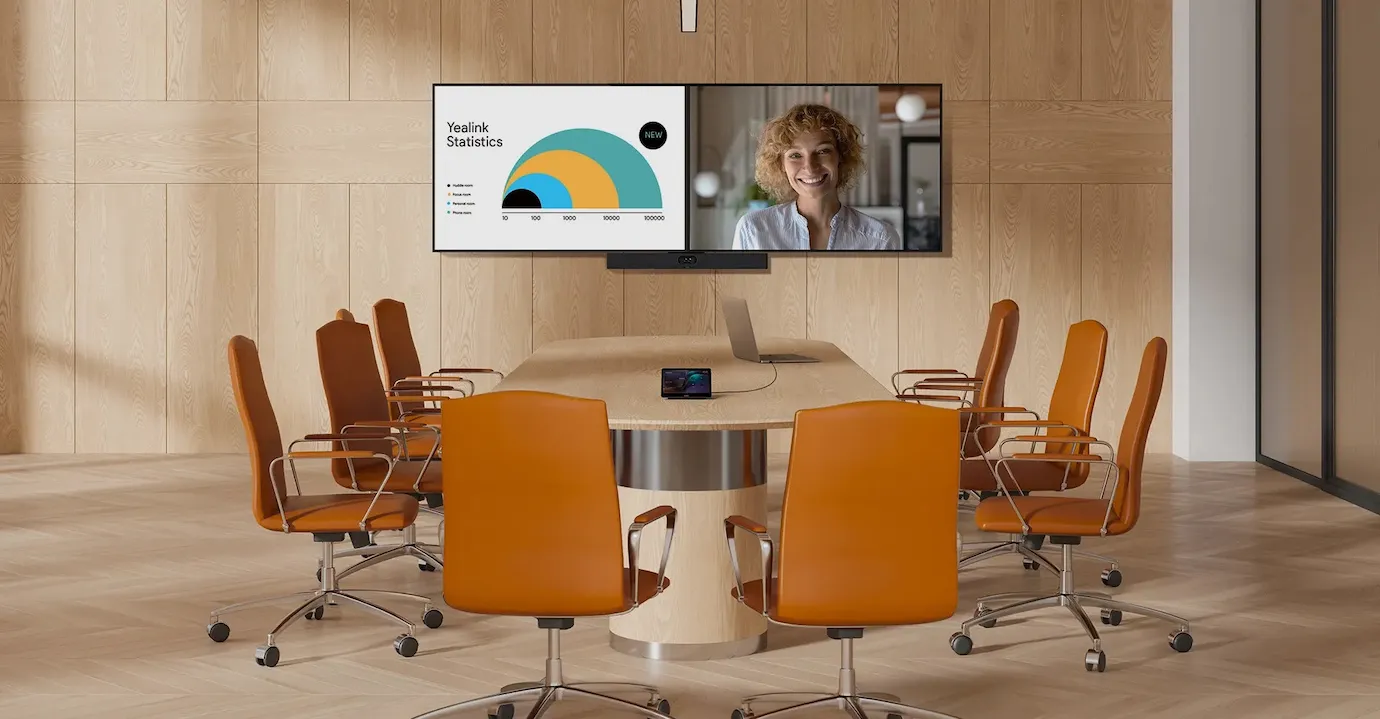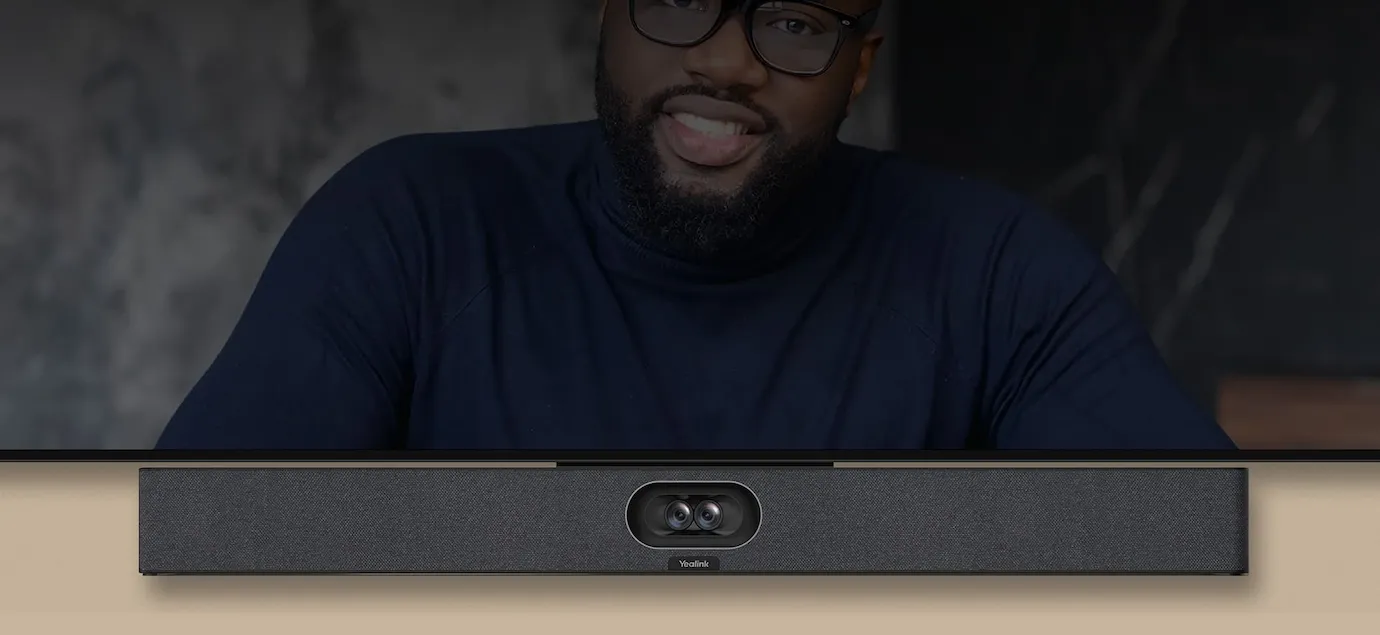

£2,404.80*
- Field of view 120°
- Focus type Manual & automatic focus


Product information

The Yealink MeetingBar A40 in combination with the CTP25 touch panel offers a powerful all-in-one video conferencing solution for small to medium-sized conference rooms. By combining two 48MP cameras, the A40 ensures outstanding image quality, while the CTP25 touch panel enables simple and intuitive control of all meeting functions. With built-in speakers and an 8-way MEMS microphone array, the A40 delivers clear audio quality, supported by intelligent noise cancellation.
The technical data at a glance:
- Dual 48MP cameras for razor-sharp images
- Integrated speakers for clear sound
- 8x MEMS microphone array with intelligent noise cancellation
- 6 metre range for audio recording
- Android 13 operating system with future upgrades
- Compatibility with Microsoft MDEP for security and easy deployment
- 120° wide-angle view through dual cameras
- 10,1 inch IPS touch display for simple control and brilliant visualisation
- Flexible mounting of the CTP25 on the wall or table, direct or IP connection to the A40
High image quality thanks to dual camera technology
The Yealink MeetingBar A40 combines the images from two fixed camera lenses to ensure ultra-high-resolution image quality. With a 120° wide-angle frame, the MeetingBar offers optimal visibility for all participants in the room. This technology enables detailed displays in presentations and ensures that all participants can be seen clearly, even from a distance.

Easy installation and flexible control
The combination of the Yealink MeetingBar A40 and the CTP25 Touch Panel enables easy and flexible setup. Both power and network can be provided with just one cable connection to the control console. The CTP25's intuitive touch interface saves time during setup and provides users with effortless and efficient meeting control.
Flexibility maximised: The CTP25 touch panel
The CTP25 touch panel offers intuitive, touch-based control of all meeting functions. Meetings can be started, the camera adjusted, layouts changed or recordings made with just one tap. The 10.1-inch IPS screen ensures that everything is clearly and precisely visible, while the fingerprint-resistant surface keeps the display clean and easy to use. The CTP25 can be flexibly mounted on the wall or on the table and offers options for direct or IP-based connection to the MeetingBar A40.
Excellent audio quality for clear communication
The A40 features an advanced 8x MEMS microphone array and intelligent noise cancellation, which enables clear and interference-free voice transmission. With a range of up to 6 metres, which can be extended with additional microphones, the MeetingBar A40 is particularly suitable for medium-sized rooms. The integrated speakers ensure an even and clear sound.
Security and future-proofing with Android 13
The Yealink MeetingBar A40 is based on the latest Android 13 operating system and is compatible with the Microsoft Device Ecosystem Platform (MDEP). This integration provides easy deployment and increases security. Regular updates ensure that the system is always up to date and remains protected against potential threats.
Technical data
| Name | Yealink A40 + CTP25 Video conferencing system, 48 MP, 60 fps, 120° |
|---|---|
| Article number | 1000033108 |
| GTIN/EAN | 6938818319967 |
| Manufacturer SKU | 1206676 |
| Model name | A40 + CTP25 |
| variant | with touch panel |
| Brand | Yealink |
| Product Type | Video conferencing system |
| Frames per Second | 60 fps |
| Focus type | Manual & automatic focus |
| Operating system | Android |
| Camera resolution | 48 MP |
| Field of view | 120° |
| Inputs | 1x 3,5mm Jack , 1x Ethernet , 1x USB-A , 1x USB-B |
| Outputs | 1x 3,5mm Jack , 2x HDMI |
| Product width | 65 cm |
| Product height | 8 cm |
| Product depth | 6.2 cm |
| Weight | 5.54 kg |
| Colour | Black |
| Delivery contents | HDMI Cable , mounting material |
| Condition | New |
| Warranty | 24 Month |
| Warranty type | Bringin service Service and support information |
Product safety
| Person responsible for the EU |
|---|
| ALSO Deutschland GmbH |
| Ernst-Heinkel-Str. 4 |
| 94315 Straubing |
| Germany |
| sales@yealink.com |



